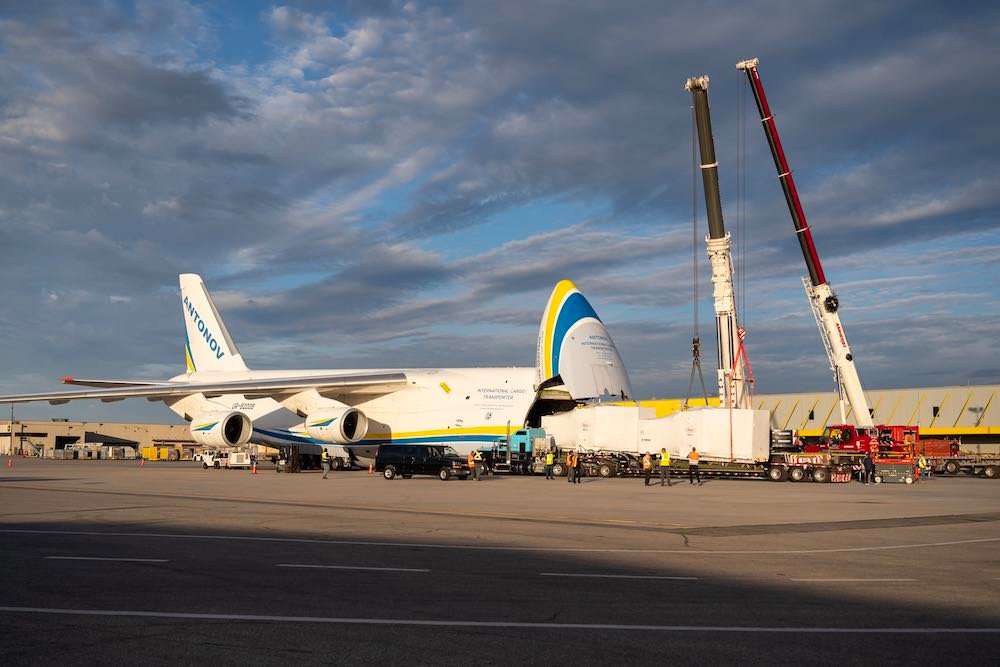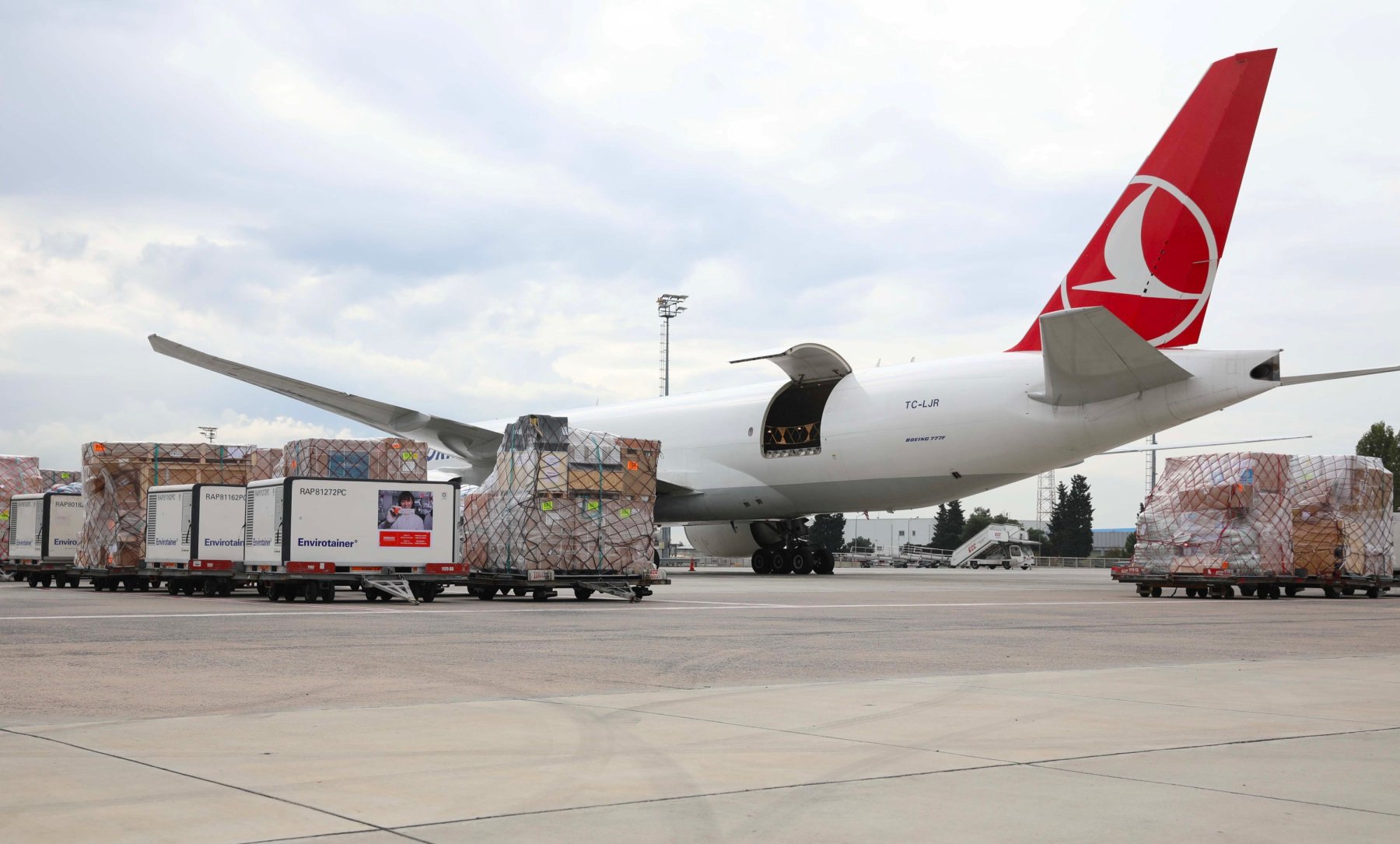Introduction
Air cargo transports over US $6 trillion worth of goods annually, accounting for approximately 35% of world trade by value. During the COVID-19 pandemic, air cargo represented one-third of total airlines’ revenue.
Two main factors define the choice of air transport for certain products:
- the value of the commodities, and
- the speed with which they must be transported.
Urgent materials such as pharmaceuticals for medical treatment or high-value commodities likes gemstones or bank metals are typically shipped by air freight. Air freight is also ideal for certain food products such as fresh fish, exotic fruits and cut flowers. The growth in demand for the transport of pharmaceutical and healthcare products has also resulted in the introduction of advanced digital solutions and new regulations for the proper handling of time and supply chain for temperature-sensitive shipments.
When looking at the various types of cargo transported by air, they fall into two main groups: General Cargo and Special Cargo. Special Cargo is then divided up into smaller specialized sub-groups.
What is General Cargo?
General cargo are items that do not fall into the Special Cargo categories and that do not require any extra precautions or special handling during air transport. These types of items are retail and most consumer goods – dry products, household & office goods, sports & leisure equipment, clothing (garment, textiles) etc. (with the exception of mobile phones, tablets and laptops).
Air freight services play a crucial role in transporting general cargo, ensuring fast and secure delivery tailored to the specific needs of different industries.
What is Special Cargo?
Special Cargo are goods that, due to their nature, weight, dimensions and/or value, may have specific requirements including packaging, labelling, documentation and handling through the transport chain. The transport of these goods are addressed through specific regulations that must be followed when preparing, offering, accepting and handling this cargo. Air freight service plays a crucial role in handling such special cargo, ensuring urgent and high-value shipments are transported safely and efficiently.
Items include dangerous goods, time and temperature sensitive products, perishable cargo, fragile goods, live animals and wet cargo, among several others. There are globally harmonized standards that ensure the safe and facilitate the transport of these products, which manage the standards and guidance related to the transport of these products.
What is Dangerous Goods?
Dangerous Goods (also known as Hazardous Material or Hazmat) is any substance or material that is capable of posing an unreasonable risk to health, safety, and property when transported by air. These hazardous materials require special handling, packaging, and strict regulatory compliance as classified by organizations like IATA and ICAO.

Hazmat includes materials that are radioactive, flammable, explosive, corrosive, oxidizing, asphyxiating, biohazardous, toxic, pathogenic, or allergenic. Also included are physical conditions such as compressed gases and liquids or hot materials, including all goods containing such materials or chemicals, or may have other characteristics that render them hazardous in specific circumstances.
There are strong regulations for shipping Dangerous Goods by air and the only standard recognized by airlines. It provides everything needed to classify, prepare, accept and handle dangerous goods shipments in compliance with international air transport regulations to facilitate their transport while putting the safety of all those on board first.
What are Temperature Controlled Goods?
Temperature Controlled Goods include both frozen and refrigerated human and animal food items as well as non-food products like pharmaceuticals and medical care items. Those commodities require specific regulations and controls on the temperature to which they are exposed during transport. In a practice of air cargo transportation Temperature Controlled Goods is divided on three categories:
- Perishable Goods (mainly foodstuffs and flowers);
- Pharmaceuticals (all kind of healthcare products);
- Life Sciences Products.
Shipping temperature controlled goods, such as pharmaceuticals and blood supplies, requires precise temperature management, adherence to regulations, proper documentation, and specialized transport equipment to ensure safe delivery.
What is Perishable Goods?
Perishable Goods ordinarily include perishable foodstuffs (dairy products, chilled or frozen fish and meat, fresh fruits and vegetables), and also cut flowers, plant material, etc. Transportation of Perishable Goods is in high demand, shorter travel time and controlled temperature make transporting perishable goods by air the preferred means of shipping.
Proper training and compliance with regulations are crucial when you transport air cargo, especially perishable goods, to ensure safety and adherence to IATA guidelines.
What is Pharmaceutical Cargo & Life Sciences Products?
Pharmaceuticals is any kind of drug used for medical purposes, likes antibiotics, vaccines, human blood-plasma fractions, and steroid hormones. Many pharmaceutical items require temperature-controlled storage to be frozen or refrigerated; some from them need to be staying in the relative humidity and/or fresh air ventilation. Transportation is a crucial part in cold chain supply management and air cargo provides the fastest way for pharmaceutical products to reach their destination. The International Air Transport Association (IATA) sets guidelines for the safe transportation of pharmaceutical cargo and life sciences products.
Also very close with this category of cargo are Life Sciences Products including human organs, human tissue samples, blood tests, etc., which regulated with the same rules with Pharmaceutical Cargo.
What are Fragile Goods?
Some example of Fragile Goods can be and are not restricted to: glass items, laboratory materials, musical instruments, technological accessories, marble, tiles, porcelains, optical instruments, and valuable collectibles.
Fragile goods require special storage and solid packaging due to their fragile nature and also required with appropriate labeling, including to prevent tipping or stacking.
What is Wet Cargo?
Some cargo should be classified as Wet Cargo, as it contains liquid, discharges liquid, or by nature may generate liquid. Some examples of wet cargo are:
- Liquid in watertight containers;
- Wet substances not packed in watertight containers, such as fresh or frozen meat, fruits and vegetables, and other perishable products;
- Products packed in ice, such as fresh or frozen fish and seafood consignments;
- Live animals from which produce liquid (mainly mammals);
- Goods which may produce liquid due to their nature, including condensation.
Packaging must be secure and capable of maintaining the shipment in a totally leak-proof condition, allowing for variations in atmospheric pressure and rapid changes in temperature during the flight.
What is Live Animals Cargo?
Live Animals Cargo means a variety of commodities, from personal pets and exotic animals to ornamental fish, insects and livestock. They may be sporting horses, agricultural animals for breeding, food animals for slaughter, zoological animals and species being transported for reasons of science.
Therefore, for long journeys, the only speedy option is to use aircraft. Carrier should guarantee that animals travel comfortably and with minimal stress thanks to appropriate accommodation and care throughout the journey, including water and food. Within these shipping live animals regulations, it states that all live animals must be placed in a container specified in the regulations.
What is High Value Cargo?
High Value Cargo is defined by IATA as goods valued at over $1,000 USD per kilo, however each country may have different values attributed to such cargo, for example, USA has a limit of declared value of $5,000 per kilo or more. From other side, most freight companies would consider any commodity valued at $100,000 USD or more to be High Value Cargo.
This cargo commonly includes gemstones, jewelry & pearls, gold & other precious metals, cash currency, bank documentation and stock certificates, works of art and high couture fashion, furs, tapes containing sensitive personal data, high-end food & electronics, etc.
Valuable cargo needs special protection, procedures & packing, including highly secure packaging or armed cargo guard to eliminate every risk of loss, damage and theft.
What is Heavy Weight and Over Dimensional Freight
Some commodities are very large in weight and/or dimensions that cannot be carried on most cargo aircraft and require a special supply chain, including special aircraft with oversized cargo compartment and nose/tale cargo ramp as well as special handling equipment during loading. Examples of such cargo can be electricity generators, construction machinery, oilwell equipment, small vessels, helicopters and others.
Most often, the way to carry out such transportation is only a charter flight with dedicated aircraft who can accommodate such cargo and can be complied on a asked rooting.
Some kinds of very special cargo
Diplomatic Cargo
Diplomatic Cargo or Diplomatic Shipments are items that are consigned to government officials and employees of foreign countries who have a diplomatic mission or duty in the hosting country, for example, ministers, ambassadors, secretaries, counselors, charged' affairs, attaches and others who has a diplomatic status.
These cargo shipments have certain legal protections, which were established by the 1961 Vienna Convention on Diplomatic Relations. Under this treaty, diplomatic missions enjoy certain privileges which allow diplomats to perform their duties and responsibilities without fear of being harassed by the host country.
Human Remains Cargo
The Human Remains must be packed in a coffin, either lead or zinc-lined and hermetically sealed, and must be accompanied by a Certificate of Death issued by a competent authority.
There is a risk of infection or body fluid leakage occurring; for this occurrence, WHO has accepted special guidelines for dealing with such spilled body fluids and infection.
Weapons Cargo
For the civil purposes, Weapons Cargo can be only firearms (rifles and others) for sporting or hunting. If the weapon travels without the customer, it must be unloaded of all ammunition and must be packaged into a sealed container together with ammunition in the protected factory packaging.
The owner or sender of the weapon must provide the brand of the firearms, the serial number, and his License number for the weapon, as well as show an Identity Card when delivering and picking up the commodity.
Such shipment should be recognized as Dangerous Goods with all formalities, including declaration this cargo in accordance with UN Number of explosive material and must be processed with separate AWB. Cargo-only aircraft are essential for safely transporting hazardous materials that are restricted from passenger aircraft.
Note. This article has been prepared using official ICAO and IATA Regulations, Wikipedia and other open Internet sources.
Explore more opportunities with SeaRates by [contacting us] respective to your interest category

